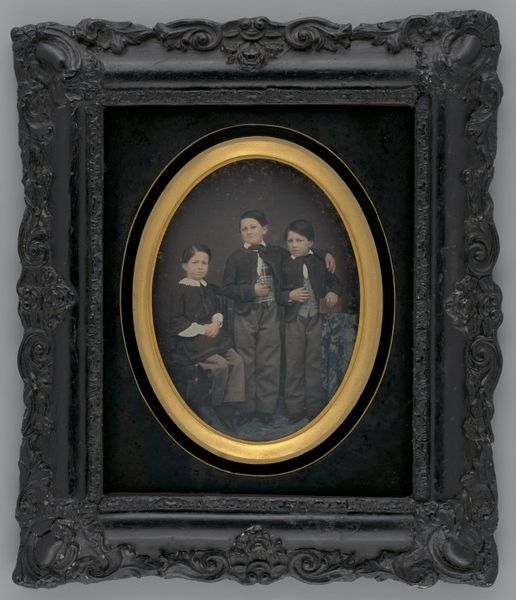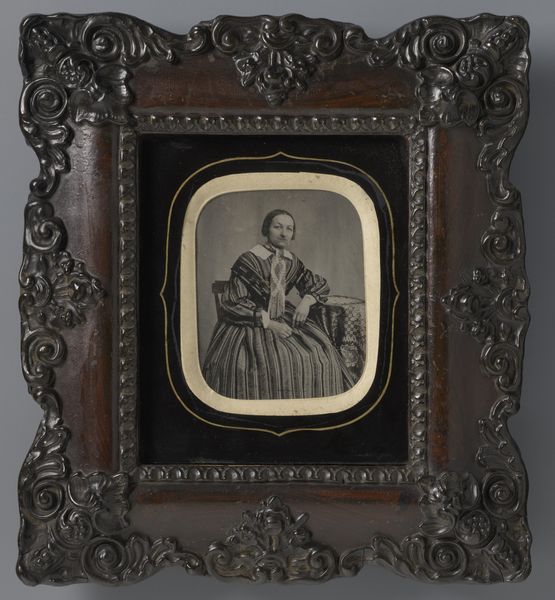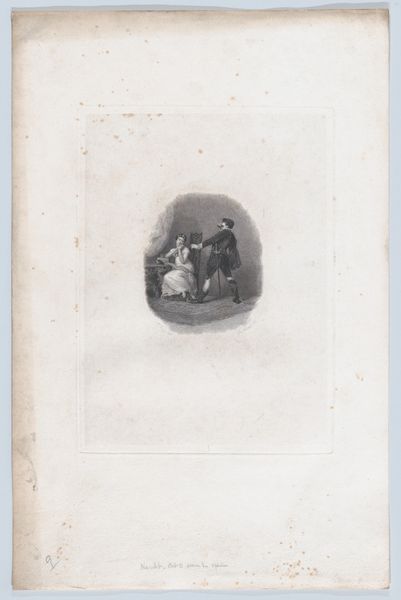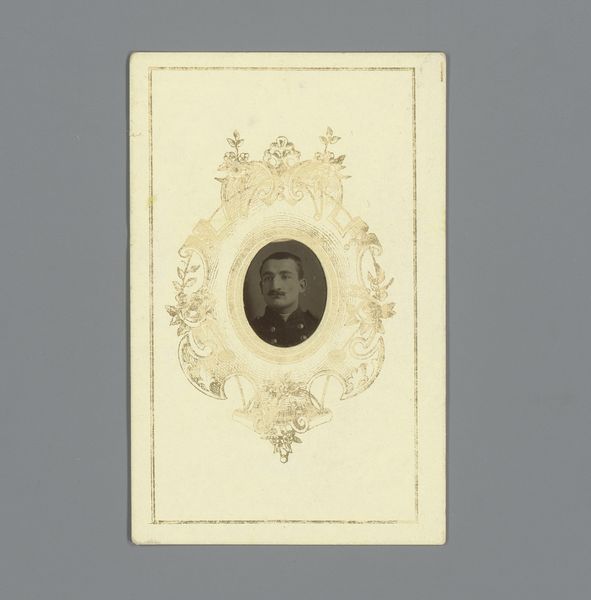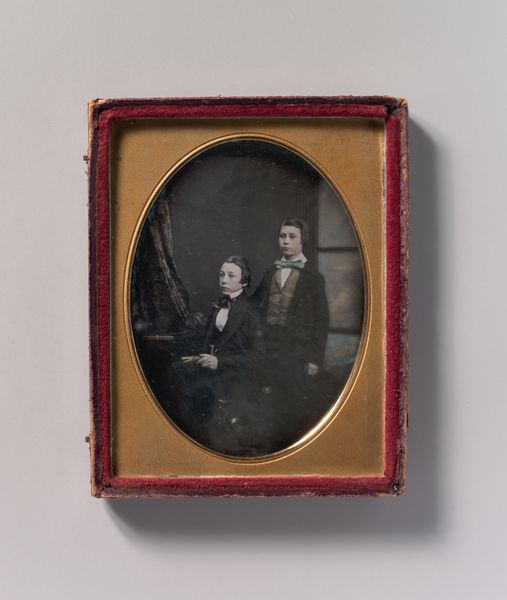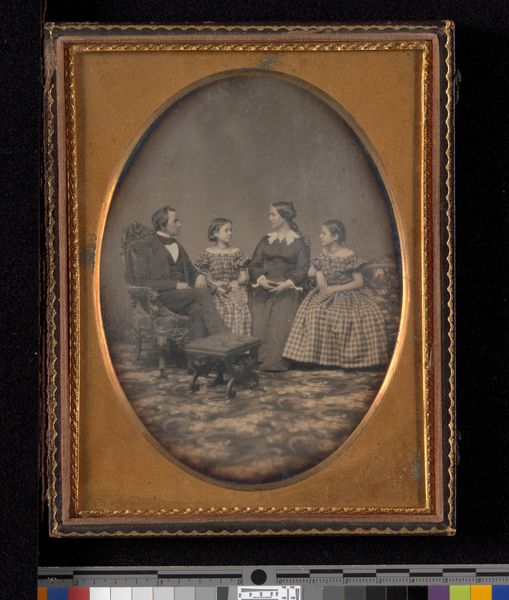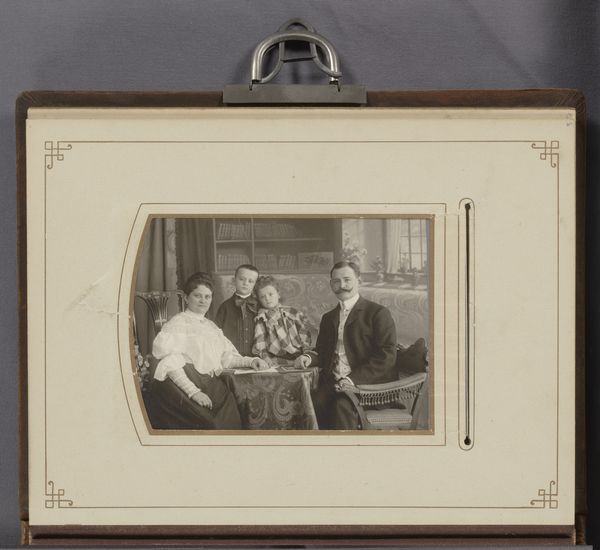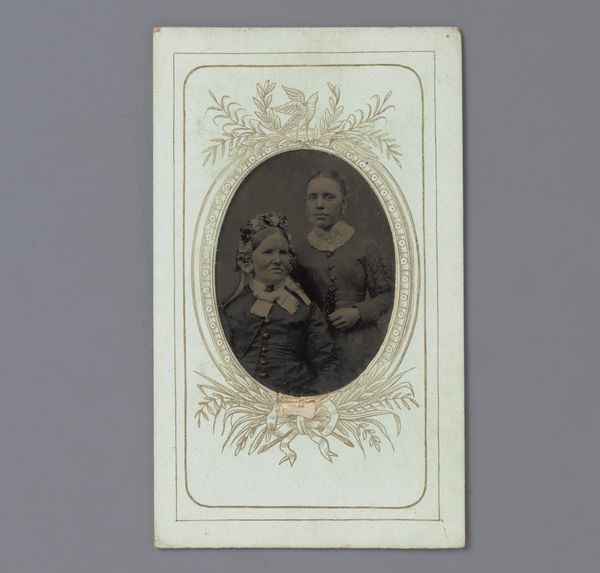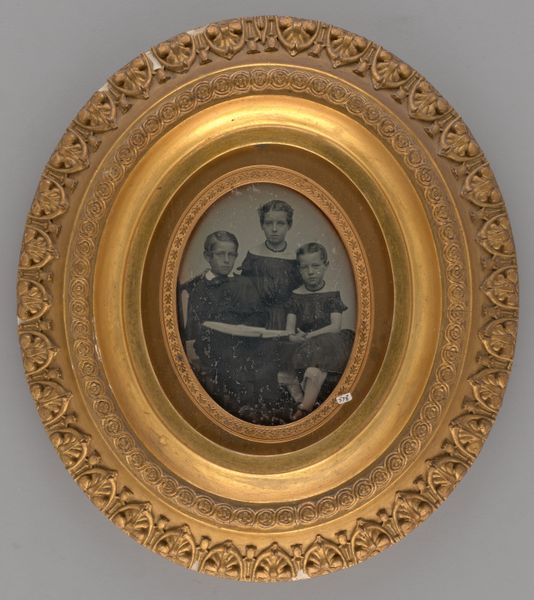
Groepsportret van drie onbekende vrouwen rond een tafel, met daarop foto's c. 1855 - 1860
0:00
0:00
photography
#
portrait
#
sculpture
#
photography
#
group-portraits
Dimensions: height 74 mm, width 60 mm, height 142 mm, width 120 mm
Copyright: Rijks Museum: Open Domain
Editor: Here we have an early photograph, circa 1855-1860, titled "Groepsportret van drie onbekende vrouwen rond een tafel, met daarop foto's" by an anonymous artist. It depicts three women gathered around a table covered with photographs. The image feels quite formal and restrained, almost a constructed tableau. What strikes you when you examine it? Curator: What grabs me immediately is the materiality of the photograph itself, set within that very rigid, dark wooden frame. Think about the labour involved. The dark wood and what that says about material constraints and access in this historical moment. Was it locally sourced? How readily available was this wood or type of construction? Editor: That's interesting. I hadn't really considered the frame itself as part of the artwork. I was more focused on the women and the composition. Curator: But the frame *is* integral. Photography at this stage was laborious. What class are we viewing? Their clothing? Also, those photographs displayed on the table… think of them not just as images but objects. How were they produced? What would those processes have involved in terms of labour and resource extraction? Editor: So, instead of just seeing a picture of three women, you’re seeing a whole system of production and consumption at work. It makes me realize the value attached to material objects during this period. Curator: Exactly! The photographic print itself, the clothes, and the ornate table...they’re all commodities. We can see it reflected within a context of nascent industrialization and shifting social dynamics. By understanding what *making* this portrait involved, it can reveal much about broader contemporary society and norms. Editor: I guess I’d never considered the art beyond the image as a photograph; but now, taking your materialist perspective, I now can examine the social context and question labor relations by reflecting how artwork production impacts its consumption. Thank you.
Comments
No comments
Be the first to comment and join the conversation on the ultimate creative platform.
